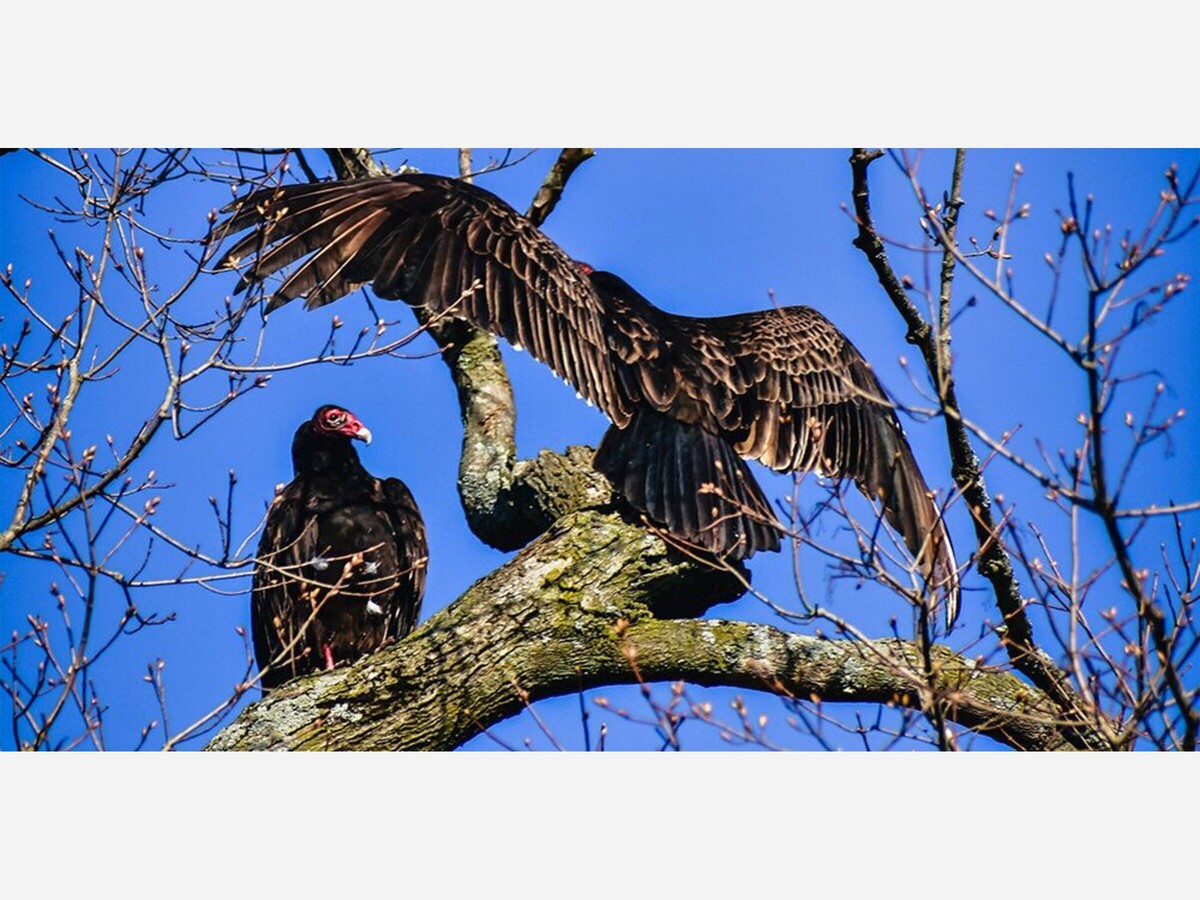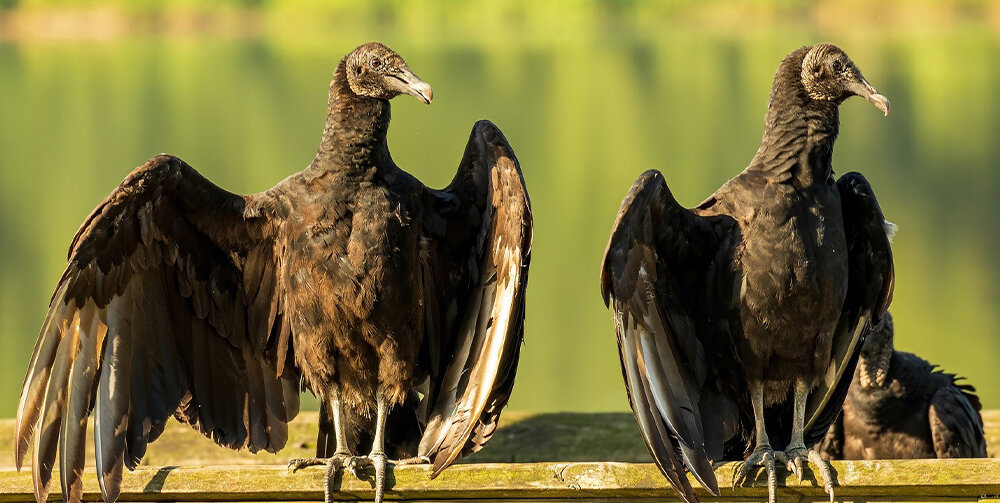Image


Original Piece Written by Kristine Manganelli (Somerset County 4-H Coordinator)
Bald heads…sharp beaks… bacteria-covered bodies…connoisseurs of rotten meat…are not characteristics that usually summon nature’s awe-inspiring beauty. But as we all know, beauty is only skin deep. The very existence of vultures helps to maintain stability in the ecosystem, an irreplaceable role in an intricate web that slowly collapses when not in balance.
If you live in New Jersey, chances are you may be familiar with the sight of vultures soaring high in the sky above, or the grisly sight of vultures eating on the side of the road. It is in this act of feeding that vultures create a ripple effect throughout the local environment. By consuming carcasses of dead animals, known as carrion, vultures also provide the service of cleaning up and preventing diseases from spreading. The carrion may contain bacteria and viruses that have the potential to spread to other animals or even humans. Scavengers, like vultures, play a critical role in eliminating and preventing the spread of these harmful substances in the environment.
Vultures are able to consume these toxins because their stomach contains a potent acid that destroys them. Their ugly appearance actually serves a purpose. The bald head allows them to avoid the germs associated with decaying meat from getting caught in their feathers. A strong immune system keeps them from getting sick. Being bacteria-ridden means vultures don’t have many predators as most would become sick from the germs.
Vultures hunt from high in the sky to get the most expansive view. They use their massive wing-span to soar on air currents. Wind thermals, or hot pockets of air in the sky, allow them to scan below for hours, barely flapping their wings. Unlike other birds, vultures rely heavily on their sense of smell to locate food. Once located, social vultures in the vicinity will join the feast as they usually feed, fly, and roost in groups. While most birds have little sense of smell, vultures have the most developed olfactory gland in the bird family, giving them super smelling powers. Turkey vultures, one of the two breeds found in New Jersey, have such a refined sense of smell, that they are able to detect gas leaks. Vultures are attracted to leaks because natural gas releases a chemical also found in dead animals.
The scavenger life does not always guarantee a daily meal, and it can be as long as two weeks between feedings. As a result, vultures gorge themselves by eating as much as they can in one sitting. Sometimes they eat until they are too heavy to fly. In this case, they will regurgitate in order to lighten their load. They also use regurgitation as a defense mechanism by projectile vomiting their acidic stomach contents to ward off predators. So yeah, even their habits and behavior can be a little…well, gross!

Black Vultures
Vultures are raptors and are members of the hawk family. With 23 species around the world with the exception of Australia and Antarctica, they are adaptable to a wide variety of environments. Vultures are divided into two categories, Old World vultures, and New World vultures, but are distantly related. Although they evolved separately, they adapted many similarities such as scavenging for food and strong stomach acids, large wing-span and effortless flight. This is known as convergent evolution- a biological process in which organisms independently evolve the same traits, and fill a similar ecological niche in different places.
Old world vultures are found in Africa, Asia, and Europe. Some of the unique traits they adapted are that they are not all bald, have a voice box, build nests to lay their eggs, have strong feet with large talons, and primarily locate food by sight. New World vultures are found in North, South, and Central America. They all have bald heads, and lack a voice box, so they hiss and grunt. They lay their eggs in rocky surfaces or tree cavities, have weak feet, and primarily locate food by smell.
The turkey vulture and the black vulture, are the two species of New World vultures that can be found in New Jersey. Turkey vultures are our native species, and black vultures are primarily found in the southern regions of the United States. They were first spotted here in New Jersey in 1981 in Hunterdon County, and are now regular breeders in the state. Black vultures have a weaker sense of smell then the turkey vulture. In fact, black vultures will spy on turkey vultures and follow them to score a free meal. The smaller black vulture will lose to the turkey vulture if alone. But flocks of black vultures can drive away turkey vultures and claim the meal.
The lesson that the vulture teaches can be applied to many parts of life. We should not be put off by appearances because our value does not come from how we look on the outside, but by the meaningful actions we contribute. The vulture also reveals that if one element is out of place in nature’s web, the imbalance touches the entire ecosystem. Each of nature’s beings play a critical role in the well-being of the planet.
Birdwatch for Vultures! While enjoying time outside, try to locate and identify vultures in your area! Check the skies for soaring vultures especially on warm days, or on cool mornings look for flocks perched in trees and on buildings. Keep an eye on the roadside while in the car. Bonus if you can determine whether the species is turkey vulture, or black vulture. Below are some clues to help with identification:
Black vultures have a compact body, broad wings, small head, and short tail. They have a steady flight style with a few deep, fast wingbeats. They are black in color with a bald black head, and white feathers under their wingtips.
Turkey Vultures are larger than black vultures. They have long tails, broad wings with long "fingers" at their wingtips. When in flight, turkey vultures hold their wings slightly raised, making a ‘V’ shape. They have an unsteady flight with very few wingbeats. Turkey vultures are dark brown with a bald red head and pale beak.